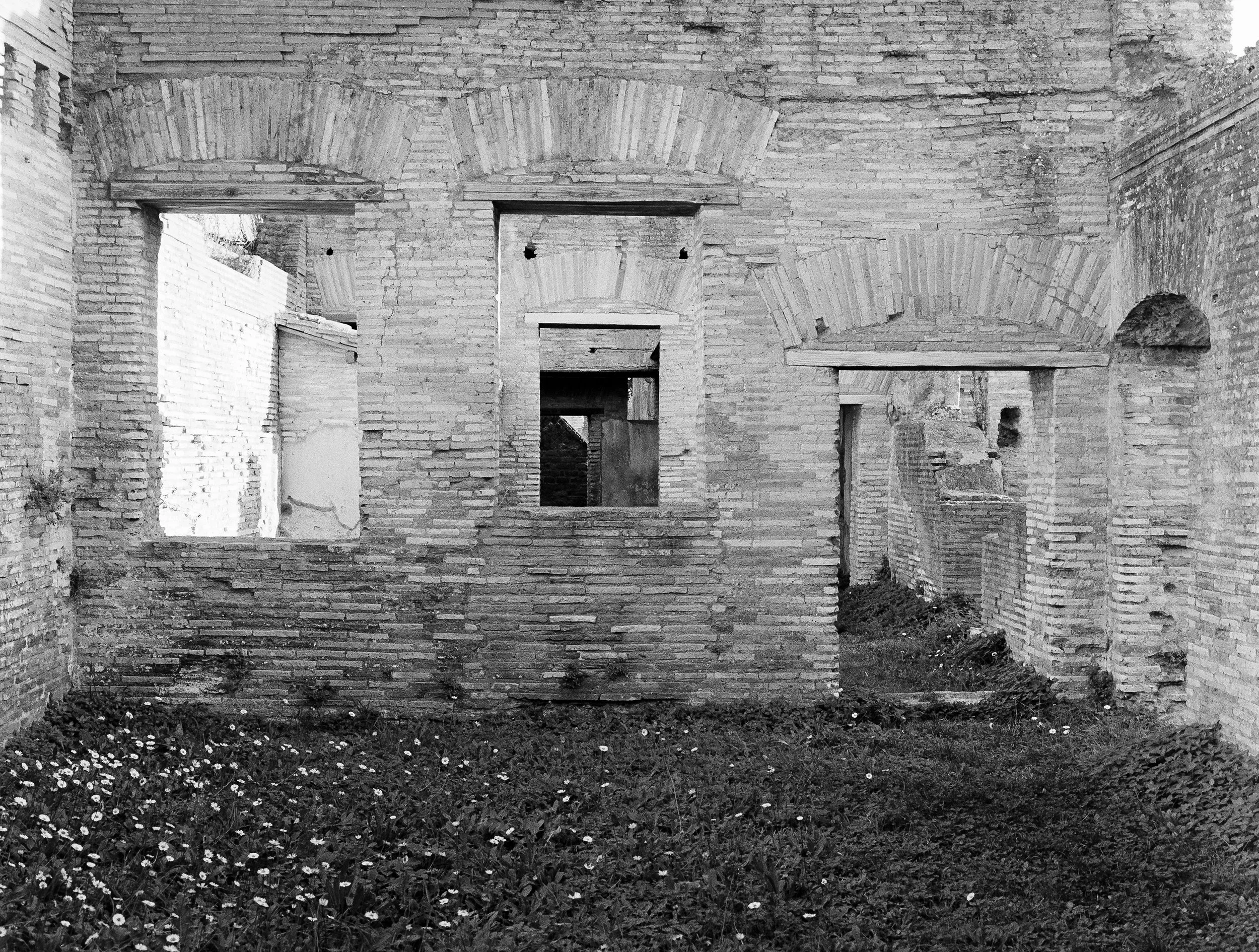Dominic Walker: Ruins and Remnants
During my time in Rome I studied the travel sketches of Louis I. Kahn (1901 – 1974) and the travel photographs of Sigurd Lewerentz (1885 – 1975). These two architects worked in tension between classical ideas and modernity, and they worked with their historical sources in highly personal ways.
Lewerentz travelled to Italy in 1922, where he took a series of esoteric black and white photographs that do not capture the monumental buildings of antiquity in the manner that we are used to seeing them. He focused on small details, bits of broken stones, and sagging mosaic floors. Those photographs remind me of the intense empathy towards materiality, or the presence of a human tactility within his two late brick churches; St. Mark’s (Björkhagen, 1960) and St. Peter’s (Klippan, 1966).
In Rome, I tried to capture moments of buildings that spoke to me emotionally - moments of darkness, sharp beams of light, diffuse rays cast onto worn frescoes, herringbone brick floors made plastic and flowing by time, capitals squashed like pancakes and shadows made by a line of cypresses, rendered on the ground like the fingers of a giant hand.
Dominic Walker is a practicing architect working on projects from the scale of furniture up to private and public buildings. He set up his own office in 2024, after his time as the Rome Scholar in Architecture at The British School at Rome (2023. His work explores the historical evolution of architectural language and its relation to contemporary tectonics. He also looks to place this language in connection with an ecological position towards building; working with found materials, and enabling space for nature. He has presented his research at the Theoretical Archaeology Conference (TAG) (2019, UCL) and has exhibited works at the Royal Academy (2020/21/23/24) and the Trinity Buoy Wharf Drawing Prize (2024).













